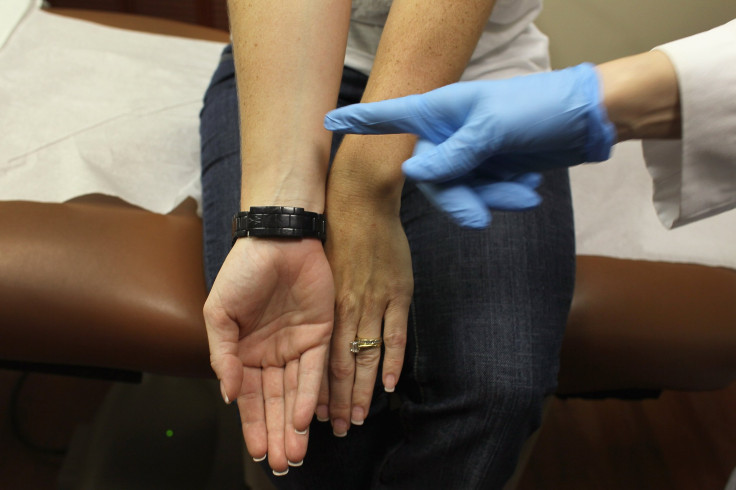Signs Of Skin Cancer: The Number Of Moles On A Person's Right Arm May Predict Melanoma Risk

The number of moles you have on your right arm may predict the number of moles on your entire body, suggests a study from King’s College London — this then predicts your risk of developing melanoma.
The American Academy of Dermatology (AAD) lists melanoma as “the most serious form of skin cancer,” explaining that it’s “characterized by the uncontrolled growth of pigment-producing cells.” While these cells, or melanomas, can appear suddenly on the skin without warning, melanoma can also develop from existing moles. That’s why, researchers said, “Mole count remains the most important risk factor for melanoma.”
Researchers analyzed data from 3,594 healthy, female twins participating in the TwinsUK study between January 1995 and December 2003. Per the website, the Twins study is “the biggest UK adult twin registry of 12,000 twins used to study the genetic and environmental [causes] of age-related complex traits and disease. “ So, in this case, the twins underwent a skin examination that recorded their skin type, hair and eye color, as well as the amount of freckles and moles they had on 17 different body sites.
The findings from this sample were replicated on a control group of male and female participants involved with a separate, UK-based melanoma study. And the results showed females with more than seven moles on their right arm were nine times more likely to have more than 50 moles on their entire body; females with more than 11 moles were likely to have more than 100, which “is in itself a strong predictor of risk for melanoma,” researchers said.
The most predictive sites for total mole count were female’s arms and legs, with the right arm (especially above the elbow) being slightly more predictive than the left. When replicated, just the arm was the more predictive site in a control population including both sexes. However, male back areas were found to be a predictive site, too.
“The findings could have a significant impact for primary care, allowing [general practitioners] to more accurately estimate the total number of moles in a patient extremely quickly via an easily accessible body part,” the researchers said in a press release. “This would mean that more patients at risk of melanoma can be identified and monitored.”
That said, only 20 to 30 percent of melanomas are associated with moles. A study presented this past summer during the 2015 ASCO Annual Meeting suggested the melanomas that suddenly appear may lead to the more aggressive forms of skin cancer. The AAD suggest that some populations are more likely to be diagnosed with melanoma, such as white males and females, as well as men older than 50, redheads and blonds; blue or green eyes; and if a person has had other pervious cancers, including breast and thyroid cancer.
If an existing or new mole seems suspicious, follow the ABCDE rule, which outlines the signs it could be melanoma. The rules focus around asymmetry, border irregularity, color, diameter, and growth. Even if your moles check out, getting to know your skin very well is a way to easily recognize any changes, so you can schedule an appointment with your doctor in potentially life-saving time (and, as we know, most people in the U.S. don't take the time.)
No, not all melanomas can be prevented, American Cancer Society said, but staying on top of changes can reduce your risk of both melanoma and other skin cancers.
Source: Ribero S et al. Prediction of high naevus count in a healthy uk population to estimate melanoma risk . British Journal of Dermatology. 2015.



























